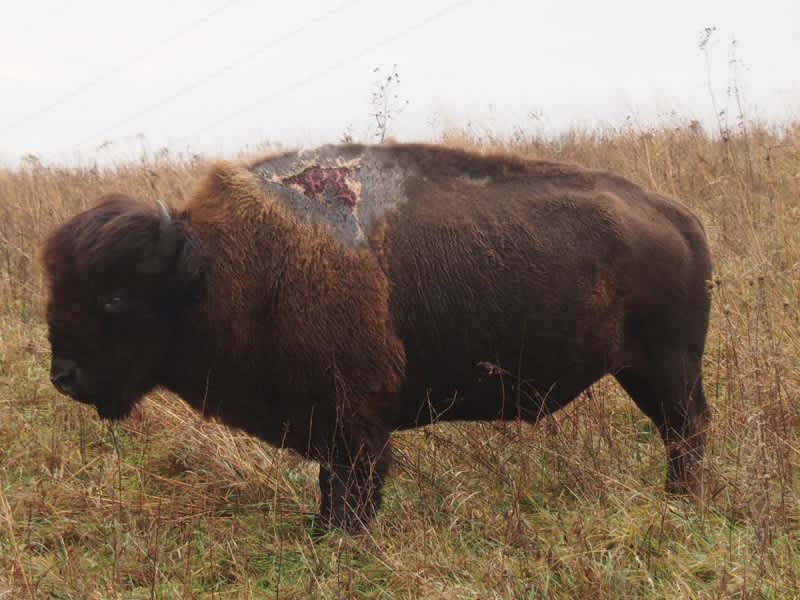“Sparky” the Bison Survives Lightning Strike, Thrives on Refuge
OutdoorHub Reporters 01.11.16

One bison in the Neal Smith National Wildlife Refuge in Iowa is making headlines this month after wildlife officials confirmed that it remains healthy nearly three years after being struck by lightning.
Lightning strikes can be just as deadly to bison as they are to humans, and it is not unknown for lightning storms to kill the large and robust animals. According to the US Fish and Wildlife Service (USFWS), a male bison in the Neal Smith herd named “Sparky” was struck by lightning in 2013 but is now thriving in the refuge.
“At 11 years old and about 1,600 pounds, Sparky is a bit thinner than the rest of the bison, but he still stands strong,” the agency wrote on its website.
In fact, the bison appeared to have shrugged off the injury with little more than a limp. Wildlife biologist Karen Viste-Sparkman was the first to notice that the animal was injured.
“Karen does regular checks on the bison to watch for signs of illness and check body condition. During a survey in late July 2013, she noticed a bull standing by himself. When she took a closer look through her binoculars, she noticed that Sparky looked bloody. This wasn’t entirely surprising because bison bulls will often fight during the mating season and July tends to be a prime time for injuries,” the USFWS stated. “Upon closer inspection, it was clear that Sparky had been burned over a large area. His hump was missing hair and there was a large lump on his hind leg, which must have been the exit wound, meaning Sparky was lying down at the time of the strike.”
A bolt of lightning can reach as high as 50,000 degrees Fahrenheit, roughly five times hotter than the surface of the sun. Understandably, this can cause severe damage to internal organs such as the lungs and heart, and in many cases even an indirect lightning strike will lead to cardiac arrest. At the time, Sparky’s diagnosis was not good.
“Sparky was thin after the strike and wasn’t expected to live long. Since a lightning strike is something that could easily occur in wild bison anywhere, the refuge let nature take its course. There are no natural predators in the bison area, so injured bison are monitored regularly and euthanized if they’re unable to eat or walk. Sparky was standing when his injuries were discovered, which was a promising sign. Karen kept checking on Sparky and was able to watch his wounds slowly heal. With a limp, Sparky kept walking,” said the USFWS.
Today, Sparky can be easily identified apart from the other bulls on the refuge by his distinctive burn mark. Biologists say he is doing well and despite being a little thinner than average, showed no other lingering health problems from the lightning strike. Refuge workers are planning to test the herd to see if Sparky fathered any more calves after the accident. The bison previously fathered three calves since it joined the herd in 2006.
“If you ever find yourself near Des Moines, stop by Neal Smith National Wildlife Refuge and see if you can spot Sparky. He tends to spend his time just like other bulls—hanging out in small groups or enjoying some quiet time alone,” wrote the USFWS.

